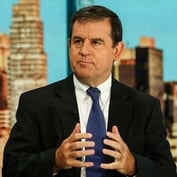What You Need to Know
- Sonders expects the Fed to take note of the market's weakness and economy's decline.
- The Fed is expected to start hiking rates in March and start shrinking its balance sheet later.
- A shift in Fed policy could add to volatility in the stock market, Sonders says.
January’s stock market decline is “glaring,” and the month isn’t over yet, says Liz Ann Sonders, chief investment strategist at Charles Schwab & Co., in her latest market note.
Through Friday, the S&P 500 was down almost 8% for the month and the Nasdaq was off 12%, falling into correction territory, defined as a 10% decline.
Major market indexes continued their decline Monday with the S&P 500 slipping into a correction before reversing their declines by day’s end. By mid-afternoon Tuesday, they had resumed their descent and the S&P 500 and Nasdaq had lost another 1.7% and 2.2% respectively.
“The heightened weakness this year — on and below the surface — have the added kicker of a murkier corporate earnings season and the Federal Reserve’s pivot to tighter monetary policy,” Sonders writes.
Fewer companies are beating earnings expectations, and those that do are exceeding consensus forecasts by smaller amounts compared with the past six earnings seasons, she adds.
Investors are now waiting for the Federal Reserve to more fully reverse its easy monetary policy, hiking interest rates and ending its asset purchases, rather than just reducing them, which has already begun. The Fed “is still adding” to its balance sheet even though it has started to taper its securities purchases and it hasn’t started to raise interest rates, writes Sonders.









 January 25, 2022 at 01:45 PM
January 25, 2022 at 01:45 PM












